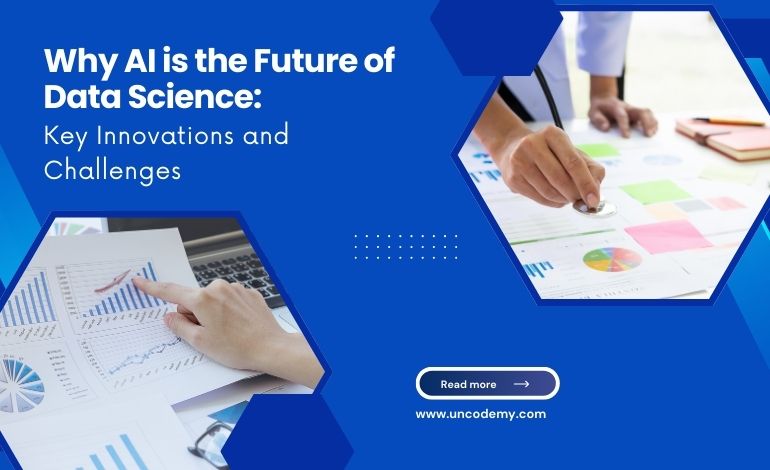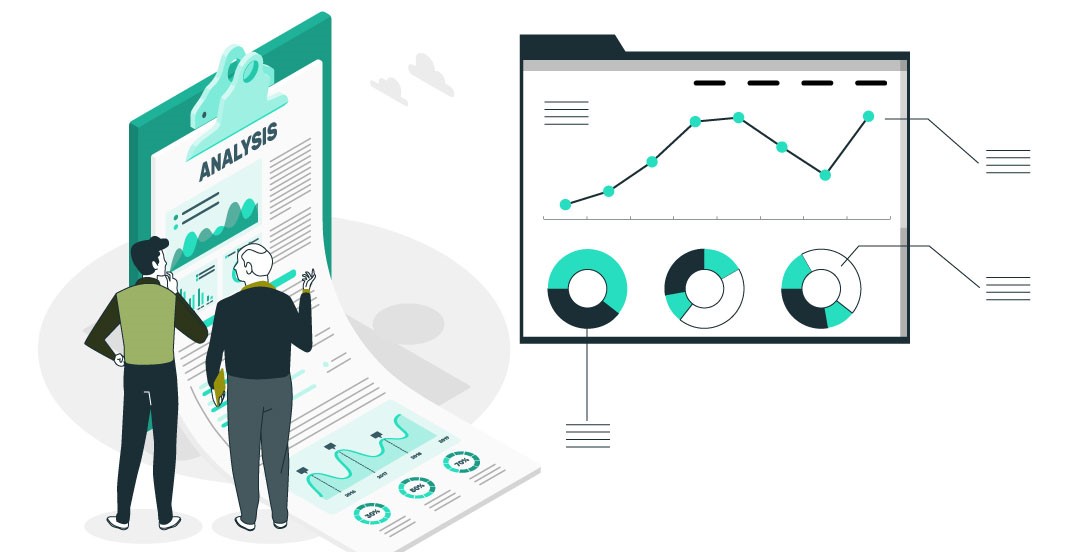Why AI is the Future of Data Science: Key Innovations and Challenges
Introduction
Data science has evolved rapidly in the last decade, driven by the exponential growth of data and computing power. However, the field is now undergoing another major transformation—one fueled by Artificial Intelligence (AI). AI is reshaping how data scientists work, making processes more efficient, and unlocking new possibilities. But with these innovations come challenges that need to be addressed.
In this blog, we will explore how AI is transforming data science, discuss the key innovations driving this change, and examine the challenges that come with it.
How AI is Transforming Data Science
1. Automating Data Processing and Cleaning
One of the most time-consuming aspects of data science is data preprocessing, which includes cleaning, transforming, and organizing raw data. AI-driven tools like AutoML and DataRobot are automating these processes, significantly reducing the time and effort required.
Key Strengths:
- AI algorithms can detect and correct inconsistencies in data.
- Machine learning models can identify missing values and intelligently fill them.
- Automation reduces human errors and speeds up data preparation.
2. Enhanced Data Visualization and Interpretation
AI-powered data visualization tools like Tableau, Power BI, and Google Data Studio are making it easier to interpret complex datasets. These tools use machine learning to suggest the best visualization techniques, helping data scientists gain insights quickly.
Key Strengths:
- AI-driven recommendations for chart types based on data patterns.
- Automatic anomaly detection for better decision-making.
- Interactive and real-time dashboards for dynamic analysis.
3. Predictive Analytics and Forecasting
Traditional predictive models rely on human-defined parameters, but AI enhances this process by identifying intricate patterns in data that humans might overlook. AI-based predictive analytics is widely used in finance, healthcare, marketing, and supply chain management.
Key Strengths:
- AI models continuously learn from new data, improving accuracy over time.
- Real-time forecasting helps businesses make proactive decisions.
- Automated anomaly detection enhances fraud prevention and risk management.
4. Natural Language Processing (NLP) for Data Analysis
AI-driven NLP tools like ChatGPT, BERT, and Google Cloud Natural Language are enabling data scientists to analyze unstructured text data with unprecedented efficiency. These tools are useful for sentiment analysis, document summarization, and automated report generation.
Key Strengths:
- Extracts meaningful insights from text-heavy datasets.
- Enhances customer sentiment analysis for businesses.
- Automates tedious documentation and report writing.
5. AI-Powered Decision-Making with Deep Learning
Deep learning models like neural networks are enabling more sophisticated data analysis. These models excel in image recognition, speech processing, and complex problem-solving.
Key Strengths:
- High accuracy in recognizing patterns in large datasets.
- Ability to process diverse data formats (text, images, audio, and video).
- Scales well with large and complex datasets.
6. Democratization of Data Science
With AI-powered tools, even non-experts can perform complex data analysis. Platforms like Google AutoML, H2O.ai, and KNIME allow users to build machine learning models without extensive coding knowledge.
Key Strengths:
- Low-code and no-code solutions make data science accessible to all.
- Reduces dependency on highly skilled data scientists.
- Speeds up the model development process.
Challenges of AI in Data Science
1. Data Privacy and Security Concerns
With AI processing vast amounts of data, concerns around data privacy and security have intensified. Organizations must comply with regulations like GDPR and CCPA to ensure data protection.
2. Bias and Fairness in AI Models
AI models learn from historical data, which may contain biases. If not addressed, these biases can lead to unfair outcomes in decision-making.
3. Explainability and Transparency
Many AI models, especially deep learning algorithms, function as “black boxes,” making it difficult to interpret their decision-making processes.
4. Ethical Considerations
The increasing use of AI in data science raises ethical questions about job displacement, surveillance, and data manipulation.
5. High Computational Costs
AI models require significant computational power and infrastructure, which can be costly for small businesses.
Conclusion
AI is undoubtedly the future of data science, transforming the way professionals analyze data, automate processes, and make predictions. From data cleaning and visualization to predictive analytics and deep learning, AI-driven tools are enhancing efficiency and accuracy in unprecedented ways. However, challenges such as data privacy, bias, and computational costs must be carefully managed to ensure responsible AI adoption.
For those looking to stay ahead in this evolving field, enrolling in a data science certification course in Delhi, Noida, Pune and other cities in India can provide the necessary skills and expertise to navigate AI-driven advancements effectively.




